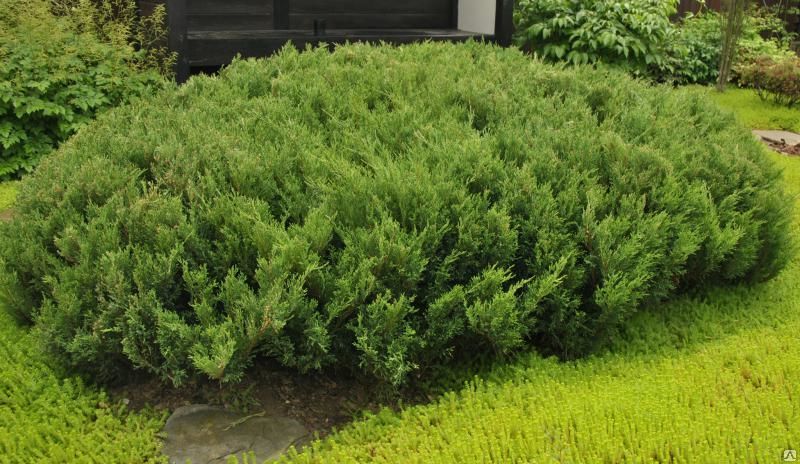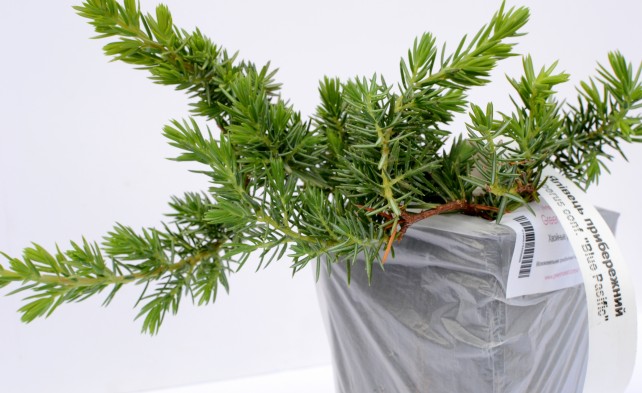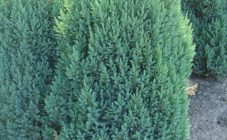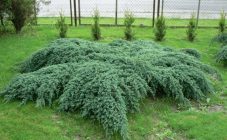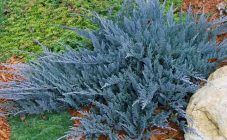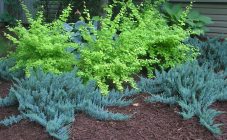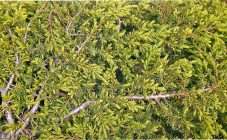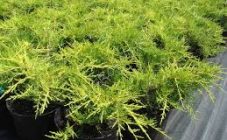The representative of the Cypress family, the Cossack juniper, translated into Latin "Juniperus Sabina", is a coniferous culture widespread in Europe and Asia. In central Russia, the growing area of the juniper stretches from the southern regions to the Leningrad region, it is also cultivated in Siberia and the Ural Territory.
This unpretentious shrub naturally grows in the forest-steppe, it can be found on sand dunes and on mountain slopes. Juniper bushes are used as a popular ornamental plant for decorating adjoining territories, summer cottages, city squares and parks. Cossack juniper is valued not only for its unpretentiousness and high decorativeness, but also for its unique ability to disinfect and heal the surrounding air with volatile beneficial substances - phytocind.
Description of the variety
Junipers are mentioned in manuscripts from the times of Ancient Egypt. The history of the plant begins with the ancient country of Sabinia, which in ancient times existed on the territory of the Apennine Peninsula. Therefore, the original name of this variety sounds like Sabina juniper.
For the first time, a description of this culture was compiled in the XXV century, two centuries later, the famous Swedish classifier Karl Linnaeus used the name of the plant to classify the Juniper genus.
Description juniper TOAzatsky:
- Growth form. An ornamental coniferous culture looks like a stunted shrub that looks like a miniature Christmas tree. Plant height ranges from 1 to 1.5 meters;
- Branches and leaves. The leaves are annular or opposite scaly type, located on the spreading horizontal branches of the shrub. The length of the leaves of the needles is 8 mm, the width is 0.7 mm, the shape is rhombic or needle-shaped;
- Coloring - green needles with a bluish tint;
- Bark. The smooth bark of a reddish-gray hue, with age, becomes covered with longitudinal cracks;
- The shoots of the plant are poisonous and saturated with essential oils. If you rub the needles of a bush in your hands, then you will feel a sharp specific smell;
- Fruits are small, rounded cone-shaped berries, covered with a gray-colored waxy bloom. The size of cones is from 5 to 12 mm in length and up to 5 mm in width;
- Winter-hardy and drought-resistant plant.
How to plant a plant
Reproduction of the Cossack juniper, its planting and care are similar to the cultivation of similar ornamental shrubs. It can be propagated by cuttings, layering or by sowing seeds. The surest way to preserve all the characteristics of the variety is to grow it by cuttings.
A plant can reproduce in these ways:
- Cuttings. Cuttings are harvested from perennial shoots of an adult plant. To do this, in the spring, preferably in cloudy weather, young branches with a "heel" are carefully broken off, for three months they must be rooted in the greenhouse. During this time, roots grow on the cuttings. After two years, seedlings with a strong root system are ready for transplanting into open ground.
- Layers. Due to the fact that the long stems spread low on the ground, the plant often self-rooted by layers.New seedlings can be dug up and transplanted to another location.
- Seed method. After sowing the seeds, the first shoots may appear in one to three years. To increase the germination of seeds at home, stratification is carried out initially at a temperature of 20 to 30 degrees for a month, then the temperature of the content is reduced to 14-15 degrees, so the seeds are kept for another four months. It is desirable to carry out scarification, which significantly contributes to a more friendly germination of seeds.
A prerequisite for the successful cultivation of a juniper crop is an open, sunny area. Planting in a shady place negatively affects the decorative effect of the plant, the bush becomes loose and faded.
Kazakh juniper is usually planted in early spring, although seedlings in planting containers can be planted throughout the growing season: from spring to autumn.
Instructions for planting seedlings:
- Before planting, the root system of the seedlings must be saturated with water. Exposed roots are additionally treated with root stimulants, which contribute to better rooting of the plant.
- Planting holes are placed in one row at a distance of at least 1.5 meters. Since the root system significantly increases in volume as the plant grows, it is recommended to prepare a hole for planting two to three times the rootstock of the seedling.
- They make up a nutritious earthen mixture of 2 parts of peat, 1 part of turf and 1 part of sand. It is advisable to add some more lime materials at the rate of 80 to 100 grams per one standard landing hole, measuring 60 x 50 x50 cm.
- A drainage layer of broken brick or gravel, 150-200 mm high, is laid on the bottom. An earthen mixture is poured on top, a planting bush is planted. It is important to position the root collar of the tree just above the ground.
- The hole with the seedling is filled with prepared soil and tamped a little.
- The seedling is watered abundantly and, after being absorbed, is mulched with peat, pine bark or a layer of compost.
Juniper of Cossackia can be propagated by transplanting young specimens of the plant. Adult shrubs are not suitable for replanting due to the poor survival rate of highly overgrown roots. Preparations for transplantation begin at the end of summer. To do this, deeply dig in a bush around the perimeter, while shortening the long roots. This agrotechnical technique contributes to the formation of a more compact root system, then the plant will undergo transplantation without much stress.
Care
Seedling care is simple and ordinary. Like all ornamental crops, the plant needs timely watering, regular feeding, loosening the soil, weeding.
There are several characteristics of care typical for juniper crops:
- Watering. Juniper Cossack has a remarkable ability to withstand drought, so you can water the plant just a few times over the summer. Depending on the shape, size and age of the shrub, the rate of water consumption per plant is from 10 to 30 liters.
- In the dry season, the juniper bush is sprayed with settled water once a week in the evening.
- Starting from mid-spring, the culture is fertilized with an aqueous solution of a complex fertilizer such as nitroammofoska or Kemir (+).
- During pruning, deformed and dry branches are removed, since the plant grows very slowly, you should not prune the shrub too short.
Diseases and pests
The most common disease among the Juniper family is the fungal disease Gymnosporangium sabinae, or rust, which is expressed as small rusty spots growing on the green shoots of the plant. If you find them, you should remove the damaged branches. In order to prevent this disease in the middle of summer, the shrub is treated with fungicides.
Another harmful disease is fusarium, it affects the roots of the plant, the plant begins to ache, the root system becomes brown, green needles begin to turn yellow and fall off, the bush begins to dry out. It is difficult to fight this disease, because it proceeds in a latent form, and initially it is not possible to distinguish a diseased plant. When the plant begins to wilt, it is too late to take any measures. If the first symptoms of this disease are found, the soil mordant is made with Fitosporin-M, Gamair or Alirin. Preventive soil treatment with Fundazol helps prevent the occurrence of this dangerous disease.
These are the most common diseases of the Cossack juniper. Insect pests on juniper bushes do not start, since the plant is too poisonous for them.
Landscape use
Due to the successful combination of spectacular appearance and the ability to survive in dry and hot summer conditions, the Cossack juniper is used in landscape design as an integral green element of group plantings and for single lawn decoration. In addition, the shrub is used to decorate alpine slides and terraces.
Juniper shrubs are used to decorate landscape gardening compositions in the Scandinavian, English and Japanese styles.
Although the area of application of the Cossack juniper is very extensive, it should not be planted for the same type of garden decoration. This landing will look boring and monotonous. But if you compose a composition of deciduous trees, perennial flowers and juniper, then such a complex combination will give the garden or park a truly unusual and attractive look.
[Interesting. A separate juniper bush looks picturesque against a green background of a lawn or a rocky hill of individual boulders surrounded by flowering heathers or barberry. / Alert]
Junipers can be planted near an artificial reservoir or stream, where its natural beauty is favorably emphasized by yellowish-orange spireas. The juniper, which is planted surrounded by its coniferous "congeners", looks unusual: undersized Christmas trees, weeping larches or mountain pines.
